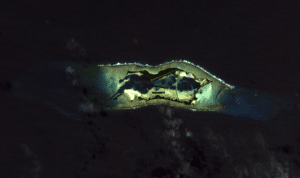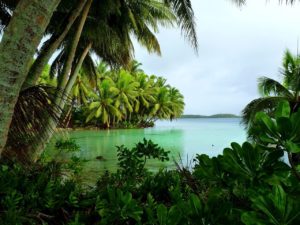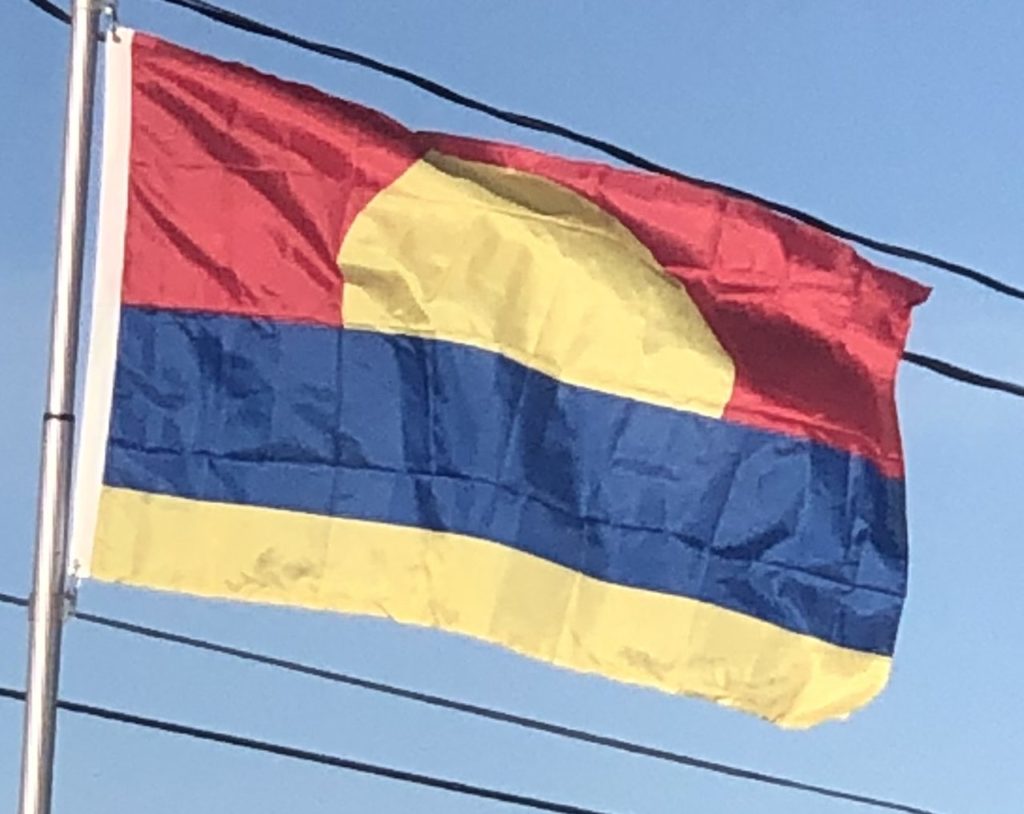
Cooper visited the island in July 1913 with the scientists Charles Montague Cooke, Jr., and Joseph F. Rock, who wrote up a scientific description of the atoll. Botanist Rock discovered unusual coconut palms in 1913, which palms expert Odoardo Beccari identified as Cocos nucifera palmyrensis, the coconut type with the largest, longest and most triangular fruits in the world, existing only at Palmyra. The apparently closest Cocos nucifera relative occurs only in the distant Nicobar Islands, India in the Indian Ocean. The “mammoth coconuts” were put on display in Honolulu in 1914 along with paintings of Palmyra by Hawaiian artist D. Howard Hitchcock, who had accompanied Cooper to the island.
In September 1921, as part of a national push to better document the coastal and outlying areas owned by the United States, a small naval detachment was sent to Palmyra to conduct the first aerial surveys of the atoll. The events of that trip were recorded by a naval Pharmacist Mate, M. L. Steele, who wrote:
“During our visit the weather was delightful. The detachment remained at these islands two days and they were perfect for flying, affording an opportunity to take wonderful aerial pictures. The commanding officer and the aviators made a number of flights and the official photographer was in his element.”

At the time, Palmyra was occupied by three Americans, two of whom were married. While there, the U.S.S. Eagle 40, which had transported the aircraft and photographic equipment to the islands, made a very rare exception to naval regulation and took aboard the wife, Mrs. Meng, to return her to Honolulu for medical aid as she was not handling the isolation and trying physical conditions of Palmyra well.
On August 19, 1922, Cooper sold his interest in the whole atoll except two minor islets to Leslie and Ellen Fullard-Leo for $15,000. They established the Palmyra Copra Company to harvest the coconuts growing on the atoll. Their three sons, including actor Leslie Vincent, continued as the owners afterwards, subject to a period of military administration and construction by the Navy before and during World War II from 1939 through 1945. In 2000, The Nature Conservancy, Inc. acquired the majority of Palmyra Atoll from the Fullard-Leo family for $30 million.
U.S. Navy Occupation (1939–1959):
A number of memoirs, reports and unofficial documents in the decades since World War II, have stated Palmyra was placed under naval jurisdiction in 1934, as part of Executive Order 6935. However, Palmyra is not mentioned in this order, in any capacity. The first official mention of Palmyra as being under Naval Jurisdiction comes from a 1939 letter from the US Attorney General, mentioned in a 1997 Insular Areas report, concluding “Palmyra was U.S. public land and that the Fullard-Leo claim was invalid. Soon after this determination, President Roosevelt issued Executive Order 8616, officially, “Placing Palmyra Island, Territory of Hawaii, Under the Control and Jurisdiction of the Secretary of the Navy”.
